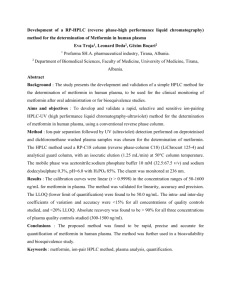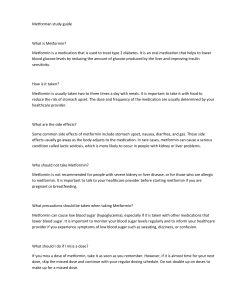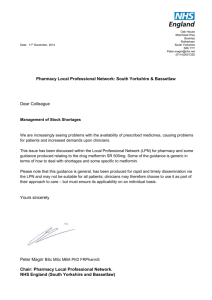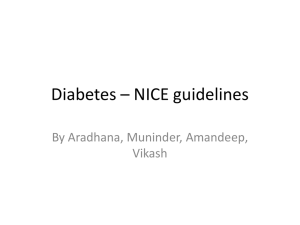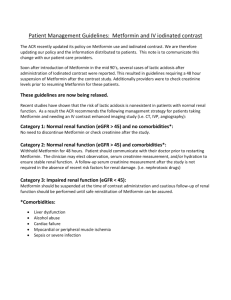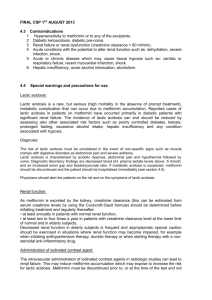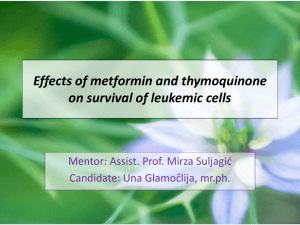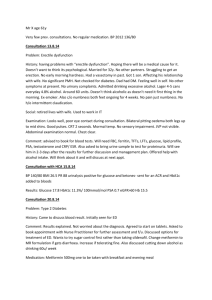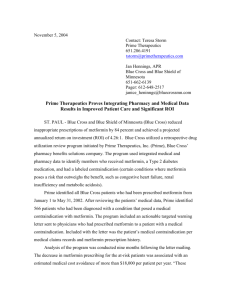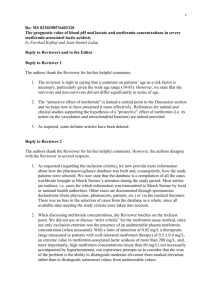TOO MUCH OF A GOOD THING: METFORMIN-ASSOCIATED LACTIC
advertisement
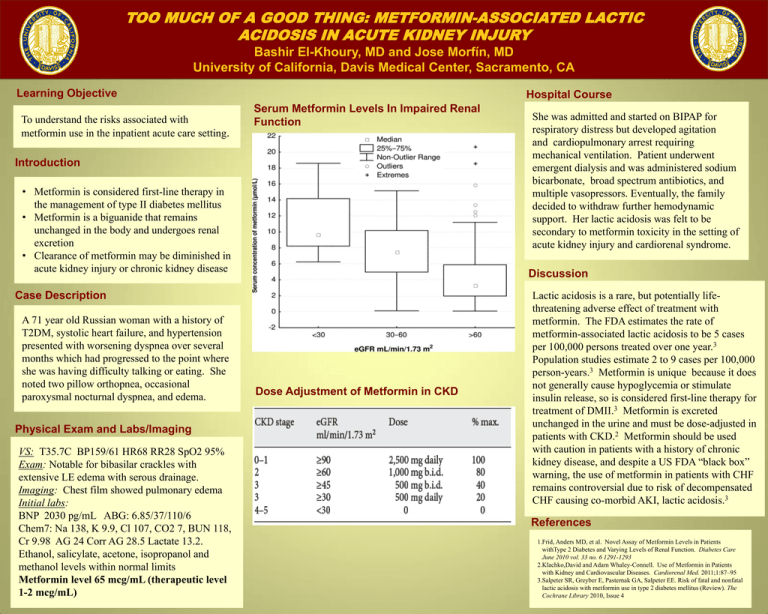
TOO MUCH OF A GOOD THING: METFORMIN-ASSOCIATED LACTIC ACIDOSIS IN ACUTE KIDNEY INJURY Bashir El-Khoury, MD and Jose Morfίn, MD University of California, Davis Medical Center, Sacramento, CA Learning Objective To understand the risks associated with metformin use in the inpatient acute care setting. Hospital Course Serum Metformin Levels In Impaired Renal Function Introduction • Metformin is considered first-line therapy in the management of type II diabetes mellitus • Metformin is a biguanide that remains unchanged in the body and undergoes renal excretion • Clearance of metformin may be diminished in acute kidney injury or chronic kidney disease Discussion Case Description A 71 year old Russian woman with a history of T2DM, systolic heart failure, and hypertension presented with worsening dyspnea over several months which had progressed to the point where she was having difficulty talking or eating. She noted two pillow orthopnea, occasional paroxysmal nocturnal dyspnea, and edema. Physical Exam and Labs/Imaging VS: T35.7C BP159/61 HR68 RR28 SpO2 95% Exam: Notable for bibasilar crackles with extensive LE edema with serous drainage. Imaging: Chest film showed pulmonary edema Initial labs: BNP 2030 pg/mL ABG: 6.85/37/110/6 Chem7: Na 138, K 9.9, Cl 107, CO2 7, BUN 118, Cr 9.98 AG 24 Corr AG 28.5 Lactate 13.2. Ethanol, salicylate, acetone, isopropanol and methanol levels within normal limits Metformin level 65 mcg/mL (therapeutic level 1-2 mcg/mL) She was admitted and started on BIPAP for respiratory distress but developed agitation and cardiopulmonary arrest requiring mechanical ventilation. Patient underwent emergent dialysis and was administered sodium bicarbonate, broad spectrum antibiotics, and multiple vasopressors. Eventually, the family decided to withdraw further hemodynamic support. Her lactic acidosis was felt to be secondary to metformin toxicity in the setting of acute kidney injury and cardiorenal syndrome. Dose Adjustment of Metformin in CKD Lactic acidosis is a rare, but potentially lifethreatening adverse effect of treatment with metformin. The FDA estimates the rate of metformin-associated lactic acidosis to be 5 cases per 100,000 persons treated over one year.3 Population studies estimate 2 to 9 cases per 100,000 person-years.3 Metformin is unique because it does not generally cause hypoglycemia or stimulate insulin release, so is considered first-line therapy for treatment of DMII.3 Metformin is excreted unchanged in the urine and must be dose-adjusted in patients with CKD.2 Metformin should be used with caution in patients with a history of chronic kidney disease, and despite a US FDA “black box” warning, the use of metformin in patients with CHF remains controversial due to risk of decompensated CHF causing co-morbid AKI, lactic acidosis.3 References 1.Frid, Anders MD, et al. Novel Assay of Metformin Levels in Patients withType 2 Diabetes and Varying Levels of Renal Function. Diabetes Care June 2010 vol. 33 no. 6 1291-1293 2.Klachko,David and Adam Whaley-Connell. Use of Metformin in Patients with Kidney and Cardiovascular Diseases. Cardiorenal Med. 2011;1:87–95 3.Salpeter SR, Greyber E, Pasternak GA, Salpeter EE. Risk of fatal and nonfatal lactic acidosis with metformin use in type 2 diabetes mellitus (Review). The Cochrane Library 2010, Issue 4
